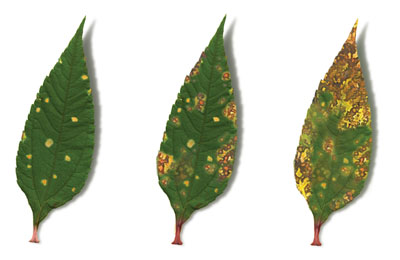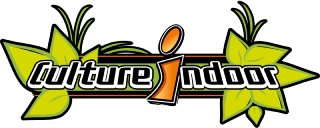Guide to deficiencies
 |
NITROGEN deficiency |
 |
POTASSIUM deficiency |
 |
SULPHUR deficiency |
 |
PHOSPHORUS deficiency |
 |
MAGNESIUM deficiency |
 |
Iron deficiency |
 |
CALCIUM deficiency |
NITROGEN DEFICIENCY
What is NITROGEN for a plant?
Nitrogen is an enzymatic component. It therefore plays an active role in the plant's metabolism
What can we see?
Stalks turning purple, yellowing leaves, which eventually fall off

NITROGEN - Solution
What can you do?
Increase the EC value in the feed or add extra nitrogen.

PlatiniumNutrients advises you to use fertilizer Aminoweed 56 - 9-0-0 NPK
POTASSIUM DEFICIENCY
What is POTASSIUM for a plant?
Potassium is important for the stability and quality of the plant. It regulates many other processes such as the balance of carbohydrates
What can we see?
Burning of the cells in the periphery of the leaves.

POTASSIUM - Solution
What can you do?
If the EC value of the substrate or soil is too high, rinse with clean water. It is also possible to add potassium yourself.
SULFUR DEFICIENCY
What is SULPHUR for a plant?
Sulfur is a molecular compound of amino acids, hormones and vitamins (such as vitamin Bi)
What can you see?
Strong purple coloring of the stem and petioles (due to anthocyanin production).

Sulphur - Solution
What can you do?
In case of a proven deficiency, it is possible to add sulfur in inorganic form using a fertilizer containing magnesium such as Epsom salt (for hydroponics).

PlatiniumNutrients advises you to use the fertilizer Energy Max or Epsom salt
PHOSPHORUS DEFICIENCY
What is PHOSPHORUS for a plant?
Phosphorus plays a key role in the combustion of cells and the overall energy transmission of the plant. Phosphorus is also a component of cell membranes, DNA and some proteins and enzymes
What can we see?
A poorly developed plant with purple/black dead leaf parts. You also see deformed and curling leaves

PHOSPHORUS - Solution
What can you do?
Therefore, mix a phosphate fertilizer, correctly from the start to your plant environment.

PlatiniumNutrients advises you on the use of fertilizer Resin Plus. Resine Plus is a powerful 100% organic stimulator!
MAGNESIUM DEFICIENCY
What is MAGNESIUM for a plant?
Magnesium is an essential element for plants because it is of primary importance in photosynthesis. In plants, magnesium is a real constituent of the green pigments of the leaves (chlorophyll)
What can we see?
Rusty brownspots. Yellow nebulous spots appearing between the veins of the leaves

MAGNESIUM - Solution
What can you do?
Spray with a 2% solution of epsomite (hydrated magnesium sulfate), repeat every 4 to 5 days.

PlatiniumNutrients recommends the use of the following fertilizers Energy Max or Epsom salt
IRON DEFICIENCY
What is iron for a plant?
Iron fulfills a number of important functions in the plant's overall metabolism. It is essential for the production of chlorophyll
What can we see?
Iron deficiency is characterized by a pronounced yellowing of the young shoots and leaves between the veins

Iron - Solution
What can you do?
The best way is to spray the leaves with an aqueous solution of hydroxyphenylacetic acid (EDDHA) (max. 0.1 grams per liter) or a chelating solution of EDTA (max. 0.5 grams per liter).
CALCIUM DEFICIENCY
What is CALCIUM for a plant?
Calcium is necessary for many processes within the plant, but above all for its growth. In the cells, it has a regulating effect and contributes to the stability of the plant.
What can we see?
Brown/yellowish spots on the leaf with a pronounced brown border

CALCIUM - Solution
What can you do?
If the soil does not contain enough calcium, then it can be added in the form of bitter lime, gypsum, saturated sludge, potassium silica limestone, magnesium oxide silica limestone, Thomas dephosphorization slag, triple superphosphate or calcium nitrate.

PlatiniumNutrients recommends the use of the fertilizer Seaweed Xtract rich in calcium
Find all our tips for your indoor growing :
- Indoor growing tips : Light
- Indoor growing tips : Air
- Indoor growing tips : Substrate
- Advice for indoor growing : Water and fertilizers
- Growing tips for indoor plants : Germination and Cutting
- Growing tips for indoor plants : Growth
- Growing tips for indoor plants : Flowering
- Growing tips for indoor plants : The growing room
- Tips for indoor growing : Systems
- Growing tips for indoor plants : Water control
- Growing tips for indoor plants : Aquaponics
- Growing tips for indoor plants : Accessories

